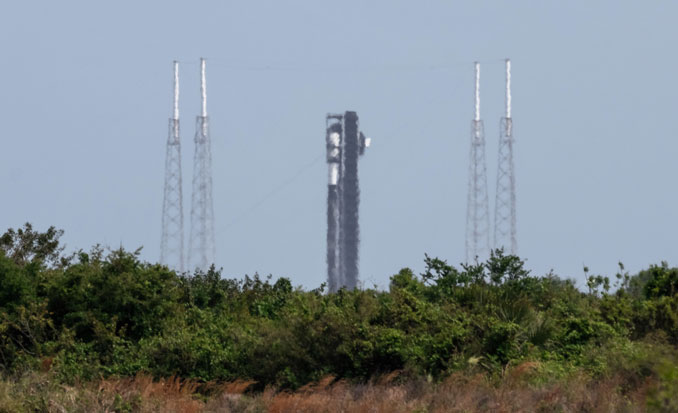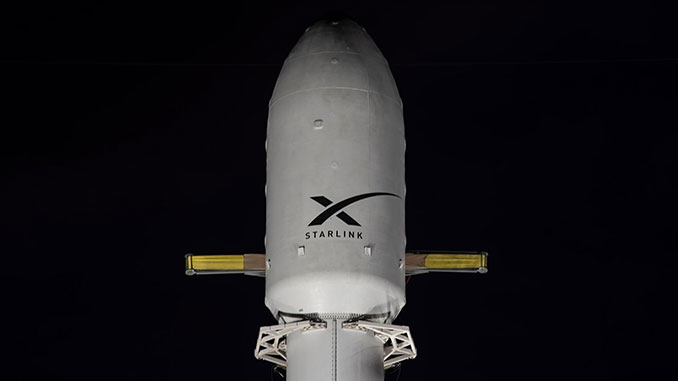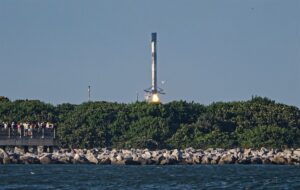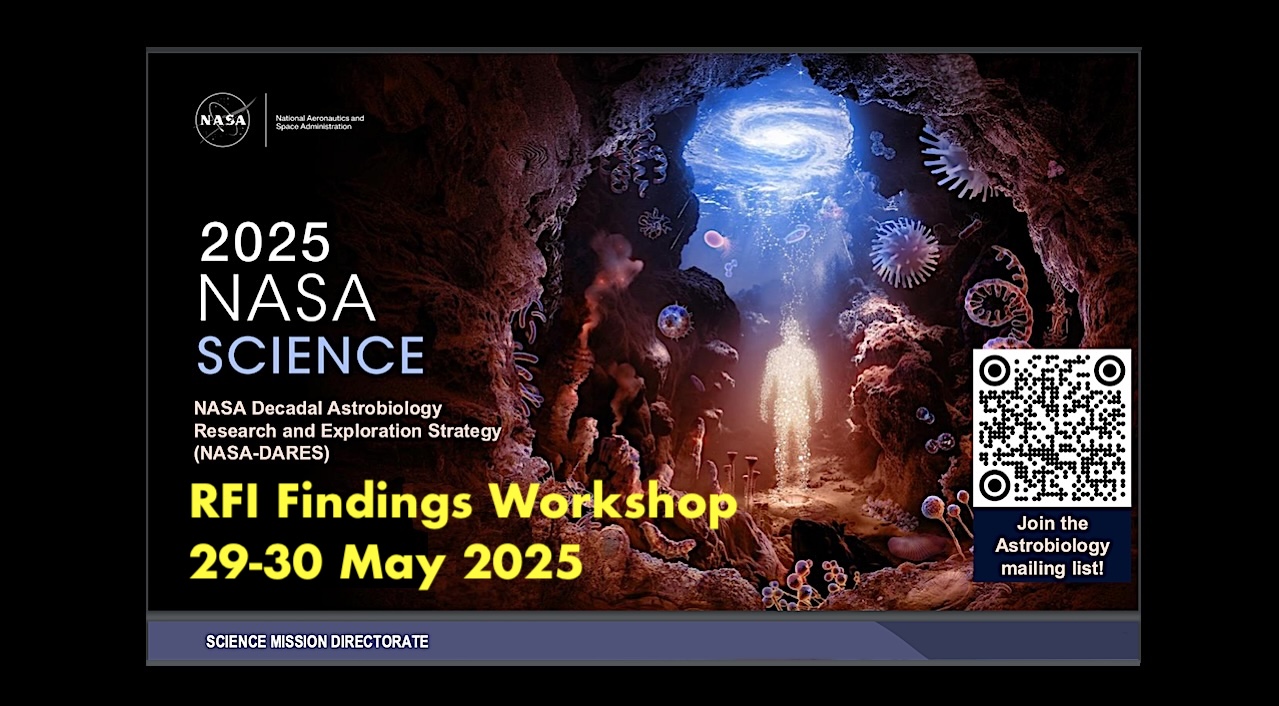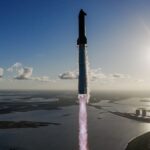Now Reading: FAA clears SpaceX to launch its 9th Starship super heavy rocket, while Flight 8 mishap investigation continues
-
01
FAA clears SpaceX to launch its 9th Starship super heavy rocket, while Flight 8 mishap investigation continues
FAA clears SpaceX to launch its 9th Starship super heavy rocket, while Flight 8 mishap investigation continues

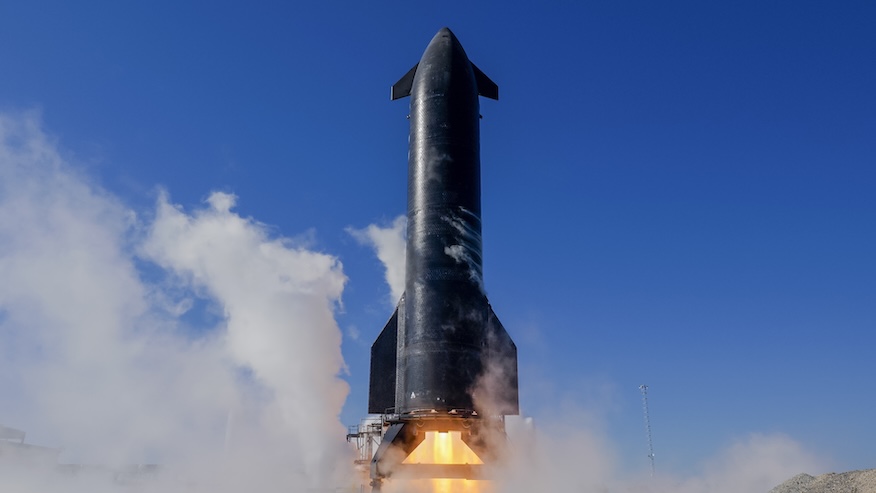
A return to flight for SpaceX’s Starship program could be a just a holiday weekend away, after the Federal Aviation Administration gave the company the go ahead.
In a statement published on Thursday, May 22, the regulator said that SpaceX “implemented all corrective actions” in response to the mishap seen during Flight 8 in March. Similarly to Flight 7 back in January, the Ship upper stage failed to complete its first burn following stage separation and broke up over The Turks and Caicos Islands.
“With the Starship vehicle return to flight determination, Starship Flight 9 is authorized for launch,” the FAA said in a statement. “The FAA finds SpaceX meets all of the rigorous safety, environmental and other licensing requirements.”
When considering how Starship could resume launches, SpaceX could have either waited until the mishap investigation from Flight 8 was completed and signed off by the FAA or request a public safety determination. As was the case for the Flight 7 and Flight 8 missions, SpaceX opted for the latter.
“When making this determination, the FAA considers several factors, including but not limited to, the nature of the mishap, the performance of vehicles safety-critical systems, and the generation of unplanned debris,” the FAA explained. “Prior to making a return to flight determination, the FAA must find that any system, process, or procedure related to the mishap does not affect public safety or any other aspect of the operator’s license.”
SpaceX submitted its Flight 8 mishap report to the FAA on May 14 and a day later, the agency announced its approval of license modifications for Starship Flight 9 as well as an increase in launch operations from five to 25 launches annually from Starbase.
Along with noting the expansion of aircraft and maritime hazard areas for the forthcoming flight, the FAA noted on May 15 that it hadn’t yet given approval for launch.
The FAA stated that it gave SpaceX notice on Wednesday, May 21, that it would be be granted a return to flight determination. In statement to Spaceflight Now, an FAA spokesperson confirmed that the return to flight was “based on public safety,” adding that that “The mishap investigation remains open.”
“The FAA continues to review SpaceX’s mishap report before it can be closed,” the spokesperson said.
SpaceX Founder Elon Musk said he would give a company talk about the Starship program prior to the launch, which would be live-streamed on his social media site, X. The specific date and timing of the talk has not been publicly announced.
Learning from mistakes
In a blog post published to its website on May 23, SpaceX detailed what it believed went wrong during the Flight 8 mission.
Regarding the Starship upper stage anomaly, SpaceX said about 5.5 minutes into the ascent burn, “a flash was observed” close to a center Raptor sea level engine “followed by an energetic event that resulted in the loss of the engine.” A leaked video still from a Starship onboard camera, posted on social media shortly after the mission, appeared to show an engine nozzle was completely missing.
“Immediately after, the remaining two center Raptor engines and one of the Raptor vacuum engines shut down and vehicle control authority was lost,” SpaceX wrote. “Telemetry from the vehicle was last received approximately nine and a half minutes into the flight, or a little more than two minutes following the first flash observation, at which point all engines had shut down.”

SpaceX said the Autonomous Flight Safety System, also referred to as the Flight Termination System or FTS for short, was healthy when mission controllers lost communication with the rocket. Engineers believe that destruct system was triggered upon loss of communication.
“The most probable root cause for the loss of Starship was identified as a hardware failure in one of the upper stage’s center Raptor engines that resulted in inadvertent propellant mixing and ignition,” SpaceX said. “Extensive ground testing has taken place since the flight test to better understand the failure, including more than 100 long-duration Raptor firings at SpaceX’s McGregor test facility.”
SpaceX made a point to state that the issues that caused the in-flight anomaly during Flight 8 were “distinctly different” from what happened during Flight 7, though the timing was quite similar.
“The mitigations put in place after Starship’s seventh flight test to address harmonic response and flammability of the ship’s attic section worked as designed prior to the failure on Flight 8,” SpaceX said.
Regarding Raptor hardware failure that led to the demise of S34, SpaceX said that “engines on the Starship’s upper stage will receive additional preload on key joints, a new nitrogen purge system, and improvements to the propellant drain system.”
“Future upgrades to Starship will introduce the Raptor 3 engine which will include additional reliability improvements to address the failure mechanism,” SpaceX said.
Take Three
Starship Flight 9 will be SpaceX’s third attempt to demonstrate the full capabilities of its Starship Block 2 design on a complete flight profile.
The lion’s share of mission objectives for the upper stage, tail number S35, are the same as the previous two missions and are set to occur at roughly the same times in the mission profile.
Those include the intent to deploy eight Starlink simulators (similar in size to the Version 3 Starlink satellites), relight one of the Raptor engines in space and demonstrate a suite of heat shield tile experiments to better protect future versions of Starship from the rigors of atmospheric reentry and eventually, a return-to-launch site attempt.
“A significant number of tiles have been removed from Starship to stress-test vulnerable areas across the vehicle during reentry,” SpaceX wrote about the forthcoming mission. “Multiple metallic tile options, including one with active cooling, will test alternative materials for protecting Starship during reentry.”
Starship is also once again outfitted with functional catch fittings to gather data about their structural and thermal capabilities. SpaceX hasn’t said which mission will feature a catch demonstration of Starship.
Back again for the first time
One of the key advancements that will be showcased during Starship Flight 9 will be the use of a mostly flight-proven booster. This would be the first time that SpaceX attempts to launch a Super Heavy booster for a second time, compared to the 416 flights of previously flown Falcon boosters.
The first stage, tail number B14, was previously used on Starship Flight 7 and will reuse 29 out of its 33 original Raptor engines.
“In addition to the reuse milestone, Super Heavy will fly a variety of experiments aimed at generating data to improve performance and reliability on future boosters,” SpaceX said. “Lessons learned from the first booster refurbishment and subsequent performance in flight will enable faster turnarounds of future reflights as progress is made towards vehicles requiring no hands-on maintenance between launches.”
The flight profile of the booster will also be altered for Flight 9. Instead of attempting to catch the booster back at the launch site, B14 will target a splashdown offshore of south Texas in the Gulf.

Prior to that, SpaceX will command the booster to perform a controlled flip maneuver to more precisely control its direction before beginning the boostback burn. It will block several vents on the hot staging ring in order to help control the trajectory.
“Previous booster flips went in a randomized direction based on a directional push from small differences in thrust from Starship’s upper stage engines at ignition,” SpaceX wrote. “Flipping in a known direction will require less propellant to be held in reserve, enabling the use of more propellant during ascent to enable additional payload mass to orbit.”
SpaceX said it intends to fly the booster at a higher angle of attack during descent as compared to previous missions. It intentionally wants to increase the atmospheric drag to decrease the speed of descent, which it said would allow for an initial landing burn that uses less propellant.
SpaceX didn’t detail how much propellant could be saved with this maneuver. However, it said the data from this approach will help with future Block 1 versions of the Super Heavy booster as well as a future versions.
During the landing burn, SpaceX will also intentionally not light one of the three center engines and instead, call upon an engine from the middle ring to complete the burn. The burn will conclude with just the two center engines.
Stay Informed With the Latest & Most Important News
Previous Post
Next Post
-
 012024 in Review: Highlights from NASA in Silicon Valley
012024 in Review: Highlights from NASA in Silicon Valley -
 02Panasonic Leica Summilux DG 15mm f/1.7 ASPH review
02Panasonic Leica Summilux DG 15mm f/1.7 ASPH review -
 03How New NASA, India Earth Satellite NISAR Will See Earth
03How New NASA, India Earth Satellite NISAR Will See Earth -
 04From Polymerization-Enabled Folding and Assembly to Chemical Evolution: Key Processes for Emergence of Functional Polymers in the Origin of Life
04From Polymerization-Enabled Folding and Assembly to Chemical Evolution: Key Processes for Emergence of Functional Polymers in the Origin of Life -
 05And Thus Begins A New Year For Life On Earth
05And Thus Begins A New Year For Life On Earth -
 06Astronomy Activation Ambassadors: A New Era
06Astronomy Activation Ambassadors: A New Era -
07SpaceX launch surge helps set new global launch record in 2024












